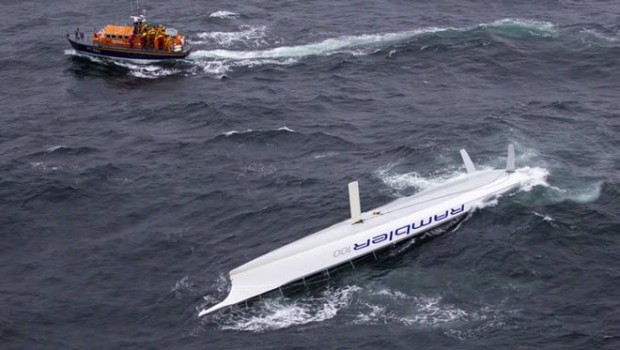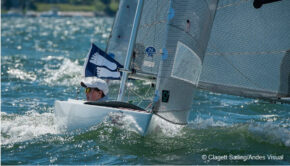Keeping the keel attached
Published on May 22nd, 2014
In its delivery to the UK after participating in Antigua Sailing Week (April 26-May 2), the Beneteau First 40.7 Cheeki Rafiki reported a leak on Thursday (May 15) before losing contact on Friday. A container ship on Saturday reported an upturned sailboat that fit the description, but was missing its keel.
A search is underway for the missing boat and crew.
While keel separation is not common, it occurs more regularly than desired. Paul Shannon, a marine industry consultant on structural design and engineering, contributes to the conversation…
In the past yacht design was based on Classification Society requirements that came from experience. Now with the European Recreation Craft Directive these requirements, for example for keels, have become based on direct calculations. This is fine if we know the design loads, etc. but it is not realistic to consider that the design we know all the operating conditions.
Generally keels are based on static load cases with a larger factor of safety for the unknowns; material defects may not be checked for each yacht (production). Loading on yacht keels is dynamic and so the design process would become very expensive – there are not the resources in the industry to design using the aeronautical methods.
Unfortunately there are many cases of yachts being certified by organisations without the necessary experience, and the fees that are charged indicate clearly that the design cannot be checked properly – a 40’ yacht cost for review can range from 2000 USD to 15000 USD for the same scope of work depending on the organisation used.
For me that range indicates a massive difference in the level and scope of the review carried out. If you build a yacht and need a certificate…which organisation do you use (pay)? If this study is carried out, a parameter that should be measured is which organisation certificated the yacht and is there a correlation with failures.
I would propose that these areas, especially in regard to keel attachment/rudders (Carbon Fibre Rudders) do not generally indicate any initiation of failure prior to catastrophic failure compared to metallic rudder stocks so the odd impact in marinas, etc can initiate a failure that will happen once you leave port.
This could be a project carried out by a University to develop new structural models for keel design loads, and a procedure for maintenance and monitoring – i.e. if the yacht is privately owned and sailed, the owner after a grounding or hitting an object would/should check the keel. But in the case of third party use, e.g. charter, the grounding, etc should be reported but there is a financial interest not to.
For example, Bavaria Yachts Match 42 had problems with keels lost, and as I understand the area of attachment was then reinforced on new and existing models. However, it appears that a lot of these failures were charter yachts in Croatia that had suffered unreported groundings prior to losing the keel or finding the keel attachment damaged probably indicate that the groundings are not reported so no checks are carried out. Charter yachts are generally used a much greater percentage of the time than a private yacht–the last figure I saw was that private yachts are used 4% of the time on average in Europe.
It is an important push to improve safety that will typically come at an increased cost, but this increased cost would not necessarily be significant. Personally, I prefer to forget the teak deck option and pay extra keep my keel attached.









 We’ll keep your information safe.
We’ll keep your information safe.